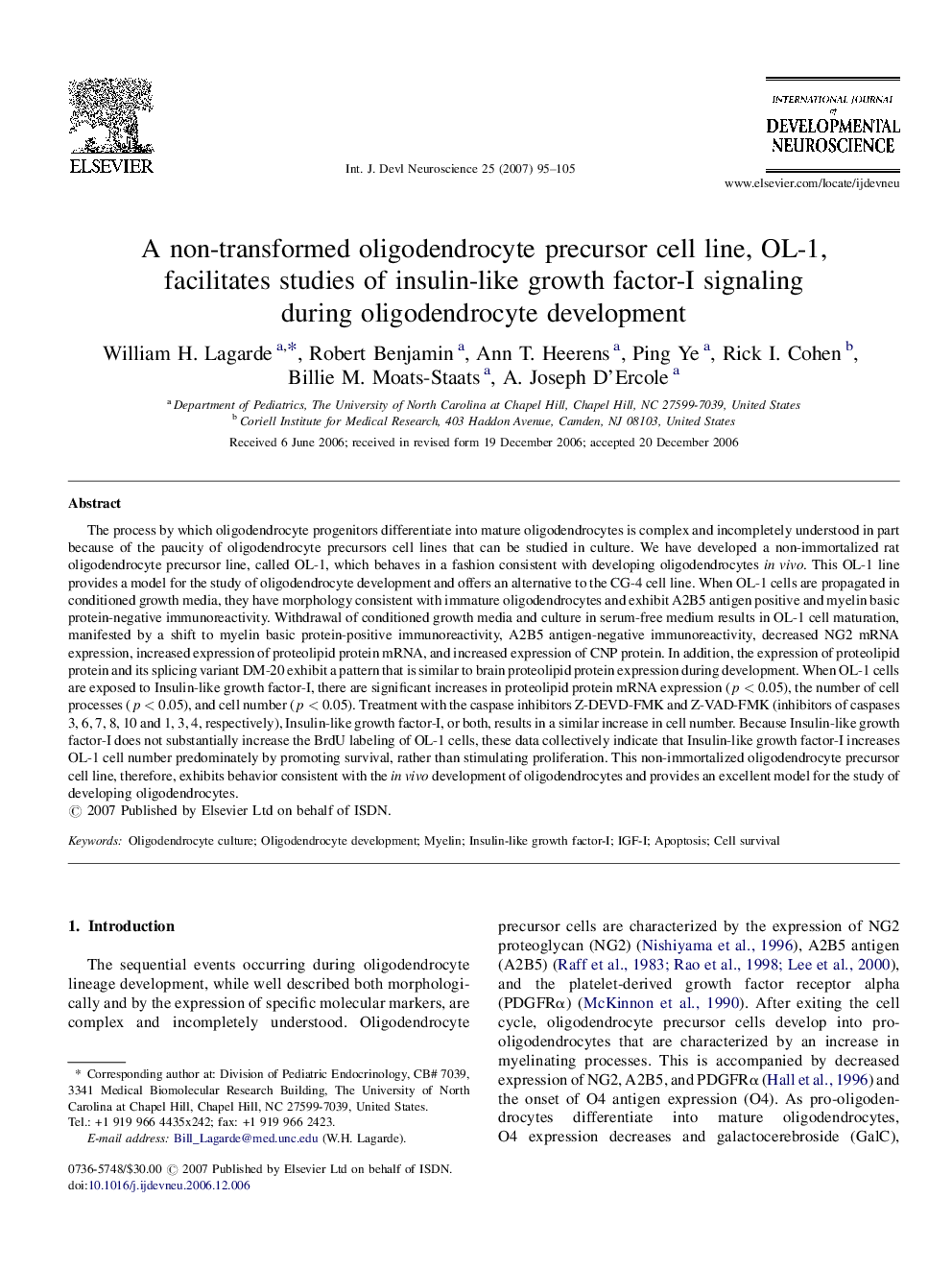| Article ID | Journal | Published Year | Pages | File Type |
|---|---|---|---|---|
| 2787155 | International Journal of Developmental Neuroscience | 2007 | 11 Pages |
The process by which oligodendrocyte progenitors differentiate into mature oligodendrocytes is complex and incompletely understood in part because of the paucity of oligodendrocyte precursors cell lines that can be studied in culture. We have developed a non-immortalized rat oligodendrocyte precursor line, called OL-1, which behaves in a fashion consistent with developing oligodendrocytes in vivo. This OL-1 line provides a model for the study of oligodendrocyte development and offers an alternative to the CG-4 cell line. When OL-1 cells are propagated in conditioned growth media, they have morphology consistent with immature oligodendrocytes and exhibit A2B5 antigen positive and myelin basic protein-negative immunoreactivity. Withdrawal of conditioned growth media and culture in serum-free medium results in OL-1 cell maturation, manifested by a shift to myelin basic protein-positive immunoreactivity, A2B5 antigen-negative immunoreactivity, decreased NG2 mRNA expression, increased expression of proteolipid protein mRNA, and increased expression of CNP protein. In addition, the expression of proteolipid protein and its splicing variant DM-20 exhibit a pattern that is similar to brain proteolipid protein expression during development. When OL-1 cells are exposed to Insulin-like growth factor-I, there are significant increases in proteolipid protein mRNA expression (p < 0.05), the number of cell processes (p < 0.05), and cell number (p < 0.05). Treatment with the caspase inhibitors Z-DEVD-FMK and Z-VAD-FMK (inhibitors of caspases 3, 6, 7, 8, 10 and 1, 3, 4, respectively), Insulin-like growth factor-I, or both, results in a similar increase in cell number. Because Insulin-like growth factor-I does not substantially increase the BrdU labeling of OL-1 cells, these data collectively indicate that Insulin-like growth factor-I increases OL-1 cell number predominately by promoting survival, rather than stimulating proliferation. This non-immortalized oligodendrocyte precursor cell line, therefore, exhibits behavior consistent with the in vivo development of oligodendrocytes and provides an excellent model for the study of developing oligodendrocytes.
